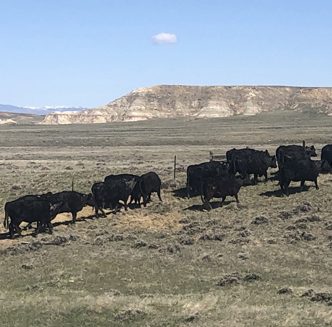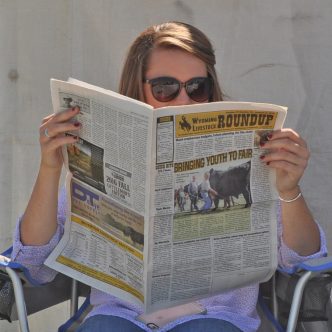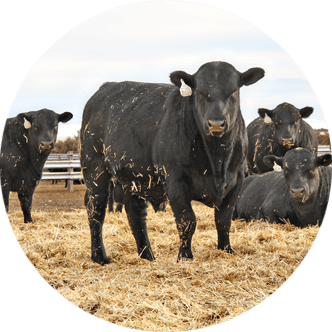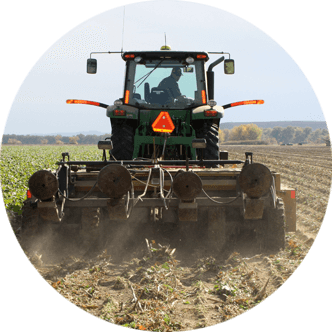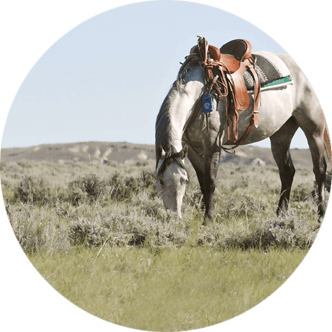George Farms dairy near Cody continues to prosper
Nestled in the shadow of Heart Mountain, George Farms is a dairy located in northwestern Wyoming with strong family ties.
In the early 1980s, three brothers – Arley, Scott and Lynn George – purchased the farm from their parents Arley W. and Evaleen George.
Today, George Farms is a family-operated business, raising 650 dairy cows and 100 commercial beef cows, along with cultivating additional crops on irrigated fields to support the farm’s needs.
The beginning
Arley W. and Evaleen, originally from Utah, settled in Wyoming after Arley W. returned from World War II.
In 1947, Arley W. was selected to receive a homestead in the Shoshone Irrigation Project, and the couple began homesteading the original 140 acres located between Cody and Powell, which was near a former Japanese internment camp.
The family converted two barracks, which they hand-cut and modified into a home where they raised their eight children.
“None of the places out here had electricity or water,” Scott stated. “The homesteaders had to improve the land to receive the land deed, so the family cut and removed piles of sagebrush.”
George Farms was established in 1954 when the couple purchased a few dairy cows and started milking them to earn a little extra money by taking the cream to town each week, and it’s what the family has been doing ever since.
“My parents didn’t have much, but they continued to work hard,” Scott added. “Some homesteaders ended up selling their parcels, but my mom always said they didn’t have the money to move or they would have. I’m glad they stayed.”
Scott recalled, at the age of six, the kids would feed the calves, and by the age of eight, they were out taking care of the cows.
George Farms is now operated by three brothers, three nephews and several generations of family members who still live and work on the farm.
“The entire business employs 20-plus people, including family members,” he mentioned. “The farm swells during the summer. The entire family jumps in to help and all of the kids come to help irrigate the farmland, which supports our livestock.”
The operation
“Running a dairy is hard work, and it never stops. We milk at midnight and noon seven days a week, 365 days a year,” Scott chuckled.
During the nine-hour shifts, dairy cows are milked in five groups, where the high producers can yield 13 to 15 gallons of milk in a 24-hour period, while low producers yield eight to nine gallons.
Scott continued, “We used to sell to a local creamery in Powell, but they closed so we shipped our milk to Riverton, until they eventually closed as well. Now, we ship our milk 90 miles to Billings, Mont. every day.”
In addition to the dairy and beef herds, Scott’s brother Lynn runs the American Breeders Service dealership in Cody.
“We have a mobile barn where we conduct custom artificial insemination programs, breeding several thousand beef cattle each year,” Scott shared.
The Georges are also forage producers, raising corn silage and hay to feed their beef and dairy herds.
“If it’s plant-based, cattle will eat it,” Scott explained. “We have tried cottonseed meal, linseed meal, distillers’ grains, rejected sunflowers and even pressed beet pulp, but now we use a nutritional consultant to ensure our livestock are getting a balanced diet and have set up a commodity barn to ensure just that.”
Scott continued, “We run a diverse operation where everyone’s talents are utilized. There is always room to grow, and we are constantly working on projects during the winter if the money is available. We have slowly expanded, but our motto is to always keep learning.”
The industry
The George family is no stranger to the dairy and cattle industry, as multiple family members have served on the Wyoming Beef Council, with Scott serving as a chairman for the council and as a past president for the National Cattlemen’s Beef Association. Arley served on the Western Dairy Association as a board member.
“It’s good to know there are organizations and individuals out there willing to protect our interest in the dairy and beef industries,” he mentioned.
Scott reiterated the future of dairy will get bigger through the utilization of technology and robotics.
Technology is everywhere on modern dairy farms, and it is now common to see cows being milked using machines like automated milking systems and wearing electronic sensors such as activity monitors.
He went on to explain milking robotics makes it possible for cows to be milked on their own schedules.
“When a cow is ready to be milked, she enters the pen, and the robot recognizes her based on the sensors in her collar. After her udders are cleaned and sanitized, a robotic arm extends to milk the cow, and a feeding box swivels out to give her a small snack to enjoy while she waits the five minutes or so it takes to be milked,” Scott explained. “When finished, a gate automatically opens, and she heads back into the barn. This is where I see the milking industry going.”
Melissa Anderson is the editor of the Wyoming Livestock Roundup. Send comments on this article to roundup@wylr.net.

